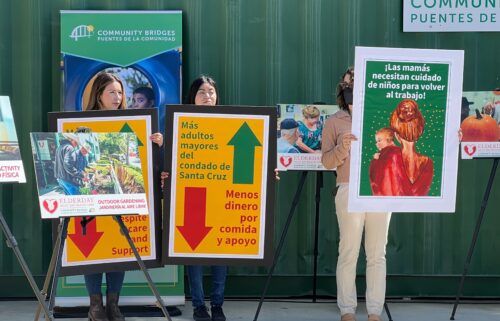Secrets revealed from 1958’s seven crosses of Soledad
SOLEDAD, Calif., (KION-TV)- Last month, Zacatecan author Alvaro Mercado published a compilation of 120 immigrant stories, including the story of three tragedies that claimed the lives of dozens of braceros in the 1950s.
This comes just as the immigrant community fears the new U.S. government possible immigration decisions with the promise of massive deportation orders by President-elect Donald Trump.
Among the 120 immigrant stories in Mercado's book “Migrante,” are the stories of braceros and their lives as farm workers in Monterey County. It also tells of the events that ended their lives in tragic ways. Two in Monterey County and one in Fresno County.
One of the most recognized and remembered stories each year is “The Chualar Tragedy.” However, there were at least three other tragedies, which led to the end of the Migrant Program in the 1960s. “The Soledad Holocaust” and “Los Gatos Plane Wreck.”
On June 17, 1958 in the southern Monterey County town of Soledad, 14 braceros died while desperately struggling to escape the flames, while 17 other braceros were hospitalized in critical condition.
The National Safety Council considered this fire to be the worst non-collision automobile tragedy in the country.
This story has very littler recognition with locals. Author Mercado narrates in his book about how he learned of this tragedy from the perspective of a witness, Frank Melendez, who at the time was only 10 years old.
Melendez and his grandfather, Ignacio Alvarado, were walking the streets of Soledad when a car carrying these braceros exploded. Melendez says that at that time they were illegally converted vehicles that were used to transport braceros, and they were locked with chains on the outside.
That truck was carrying at least 50 workers. The driver failed to warn of the possible danger, and one worker lit a cigarette, which immediately set fire to two gasoline containers placed under the benches where they were sitting.
Grandfather Alvarado then rushed to the aid of these workers and was able to rescue at least a dozen of them, but unfortunately 14 workers died in the fire. Within days, seven bodies were claimed by their families and sent to Mexico for burial. However, seven were never claimed.
Alvarado then set aside a piece of land in the Soledad Cemetery, and placed the seven braceros on his property for burial. With his own hands, Melendez and Alvarado dug the crosses and buried these men without knowing their identity or where they came from. They wanted to give them a dignified place to rest.
Shortly afterwards, ironically, Alvarado, died in a very similar way to the braceros; in an accident that ended in flames.
He was buried in that plot of land along with the seven braceros, where to this day there are five crosses without names.
As the years went by, two young men from Mexico came looking for their deceased grandparents. After searching for them all over California, they found Melendez, who took them to the unmarked crosses in the Soledad Cemetery.
There, the two young men were able to place the headstones with the names of their grandparents, Rufino and Cristino Escobedo Haro.
There is very little documentation of this story in Monterey County, however, author Mercado was able to speak with the boy who witnessed the tragedy and buried the braceros.
After this event, the stretch of Highway 101 in the southern part of the county was named Bracero Memorial Highway, and an excerpt of the story is written in the Bracero archives.
Los Gatos Airplane Wreck, 1948
On January 28, 1948 a DC3 plane piloted by U.S. immigration authorities was carrying 28 bracero farm workers from Oakland for deportation to Mexico.
While en route, the plane crashed in Los Gatos Canyon in western Fresno County near Coalinga. In this tragedy, all 28 deportees were killed, along with the crew and a security guard, leaving 32 dead.
The Latino community of Fresno buried the farm workers in the local Catholic cemetery, not knowing the identity of these individuals, so their names were not on the headstones.
It was not until 2013 that an investigation revealed the identity of these workers, and a memorial was built with their names.

The original Telemundo article is available here.




